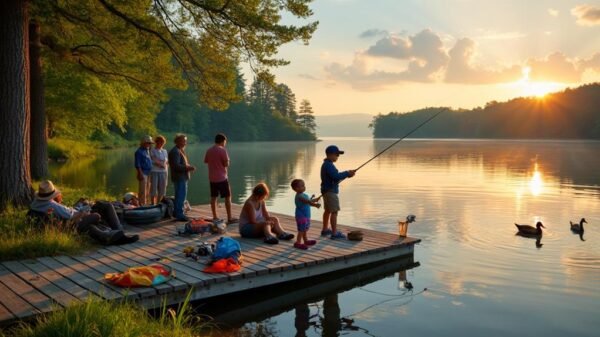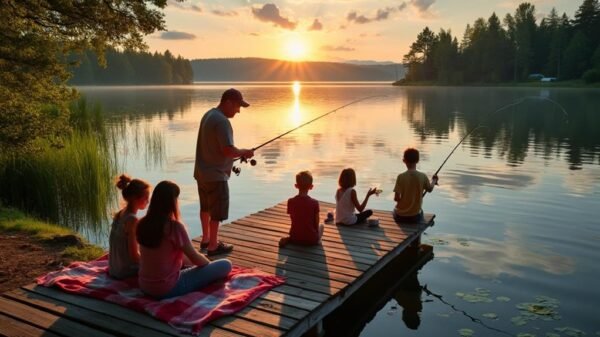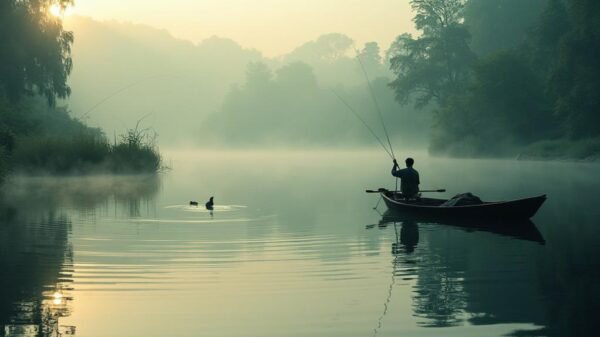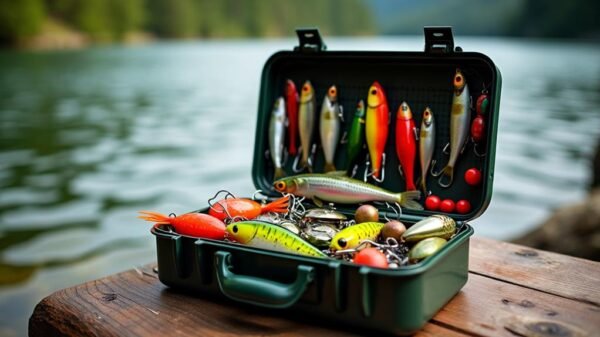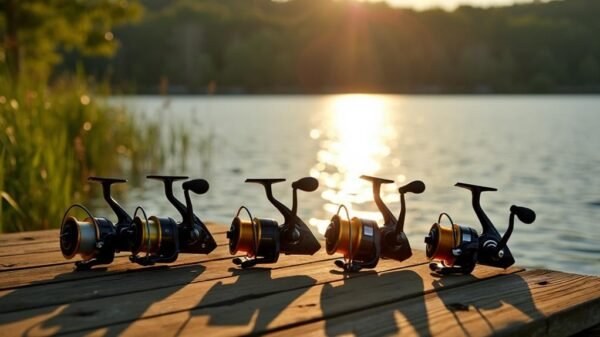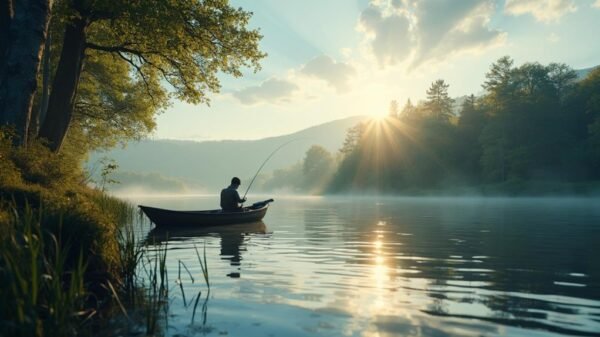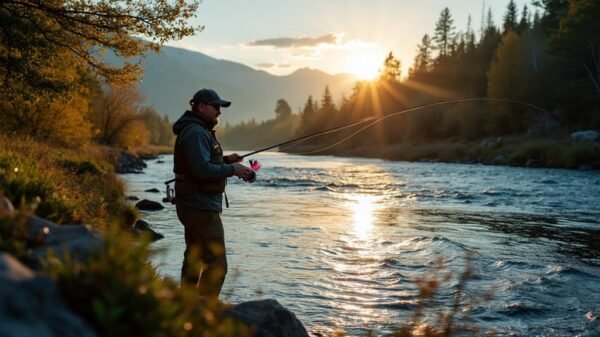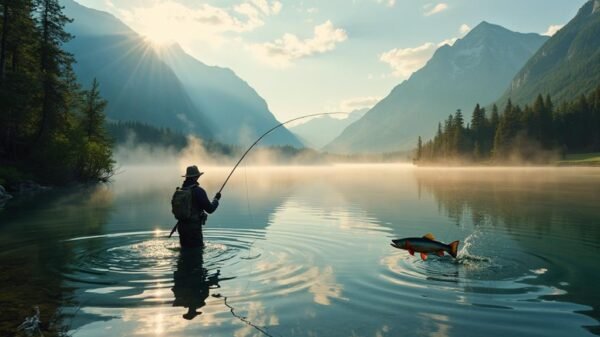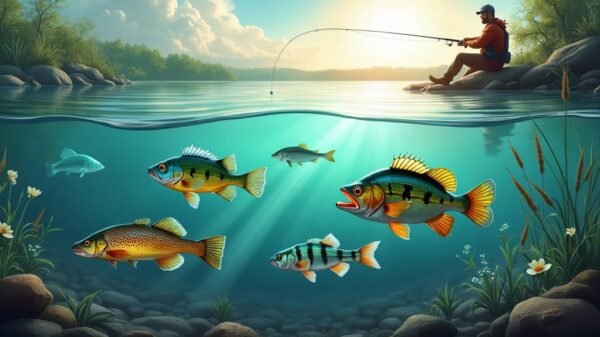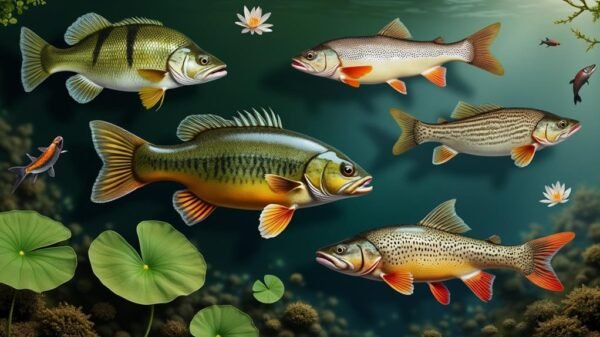To identify freshwater fish, start by observing their key traits like body shape, fin sizes, and colors. For instance, bluegill sunfish have vibrant hues, while catfish are easy to spot with their whisker-like barbels. Familiarize yourself with common species like largemouth bass and rainbow trout, each with unique features that make them stand out. Tools like field guides and fish identification apps can greatly help. Remember to follow responsible fishing practices to protect these beautiful species. With these tips, you'll be well on your way to becoming an expert in fish identification in freshwater ecosystems! There's so much more to discover.
Understanding Freshwater Ecosystems
Freshwater ecosystems are crucial habitats that occupy roughly 1% of the Earth's surface, yet they sustain an array of life forms. These dynamic environments encompass rivers, lakes, streams, and wetlands, each filled with distinct flora and fauna. When you venture into these ecosystems, you observe nature and enter a realm where life flourishes in balance. Knowing the optimal times for fishing in these areas can enhance your experience and increase your success, as conditions such as water temperature and weather patterns can influence fish behavior and activity levels.
Gaining knowledge about freshwater ecosystems can help you appreciate their beauty and significance. Each habitat plays a vital role in maintaining ecological balance. They purify water, offer habitats, and assist in climate regulation. By learning about the species that inhabit these regions, you'll understand their interconnected relationships.
Take a moment to observe your surroundings. Notice the verdant plants along riverbanks, the fluttering dragonflies above the water, or the gentle ripples signaling fish beneath the surface. Every detail holds importance. Remember, safeguarding these ecosystems is crucial for ensuring the well-being of wildlife and providing clean water for future generations. So, get out there! Explore your local freshwater habitats, and connect with the remarkable life that resides just below the surface. Your adventure awaits!
Common Freshwater Fish Species

In the vibrant world of freshwater ecosystems, you will find a variety of common fish species, each showcasing distinct traits and behaviors. One popular example is the bluegill sunfish, known for its bright colors and eagerness to bite on various baits. The largemouth bass stands out as a favorite among anglers due to its impressive size and spirited fight, commonly inhabiting warmwater habitats. For those interested in smaller fish, the guppy is a lively species, ideal for newcomers in the aquarium hobby.
Freshwater fish classification often depends on water temperature, which significantly affects their feeding behaviors and habitat choices, including the effects of temperature fluctuations. The catfish, easily identified by their whisker-like barbels, can be found lurking in bottom substrates, poised to ambush unsuspecting prey. Equally notable is the rainbow trout, celebrated for its vivid colors and swift movements in cooler waters.
As you delve into the world of freshwater fishing or simply enjoy observing these aquatic creatures, you will come to appreciate their vital roles in the ecosystem. Each species plays a part in maintaining the balance of life within rivers, lakes, and streams. So grab your fishing gear, and prepare to explore the fascinating realm of freshwater fish—there's a wealth of discovery awaiting you.
Key Identification Features

The identification of freshwater fish depends on several key characteristics that distinguish each species. First, observe the body shape; some fish, like the slender catfish, have long and thin bodies, while others, such as the flat-bodied sunfish, are deeper and broader. These shapes often reflect their environment and swimming habits, indicating their adaptation to specific habitats like rivers or lakes. Next, examine the fins—different species possess unique fin sizes, shapes, and placements, which assist in narrowing down the identification.
Coloration plays a vital role as well. Many fish, including the brightly colored cichlids and the patterned koi, showcase striking hues and designs that are often unique. These colors may shift depending on their surroundings or emotional state, so it's essential to recognize their typical appearances. Lastly, consider the head and mouth shapes; for instance, the wide-mouthed bass is designed for capturing larger prey, while species like the minnow have narrow mouths suited for grazing on smaller food sources.
Tools for Fish Identification

When you're attempting to identify freshwater fish, having the right tools can simplify the task significantly. Start with a dependable field guide, such as the *Peterson Field Guide to Freshwater Fishes* or the *FishBrain* app. These resources feature images and descriptions that highlight essential traits like body shape, coloration, and fin structure. Additionally, familiarizing yourself with classifications of fish, including coldwater, coolwater, and warmwater species, can enhance your identification abilities by providing context for the habitats where certain species thrive. A high-quality camera, like a Canon EOS, is also invaluable, as it allows you to capture clear images for future reference.
Next, consider utilizing a fish identification application, such as *FishVerify* or *iNaturalist*. These platforms often enable you to search based on specific characteristics, streamlining your identification process. A measuring tape or ruler is also advisable, as size can be a vital criterion in distinguishing species, so having one readily available ensures accuracy.
While exploring, a notebook is useful for recording notes, sketches, or observations about the fish you encounter. Additionally, polarized sunglasses from brands like *Costa Del Mar* can reduce glare on the water's surface, enhancing your ability to spot fish.
With these tools at your disposal, you'll gain confidence in your fish identification pursuits, enjoying the freedom to explore the vibrant aquatic life surrounding you.
Responsible Fishing Practices

Understanding responsible fishing practices is vital for preserving aquatic habitats while enjoying the sport. When fishing, respect the environment and its inhabitants. Catch and release techniques allow anglers to enjoy the activity without harming fish populations, particularly for species like Micropterus (black bass) and Pomoxis (crappie) found in many freshwater lakes.
If you reel in a fish, handle it with care. Keep it in the water as much as possible and use wet hands to reduce stress and injury. Familiarize yourself with ethical methods of catching fish to ensure responsible practices are followed.
Always adhere to local regulations regarding size and bag limits, as these guidelines are designed to maintain robust fish populations. If fishing in specific regions, ensure you know what is permissible.
Utilizing appropriate gear is also important. Consider using barbless hooks, which facilitate easier and less harmful releases. Additionally, avoid fishing in spawning areas to protect breeding populations.

